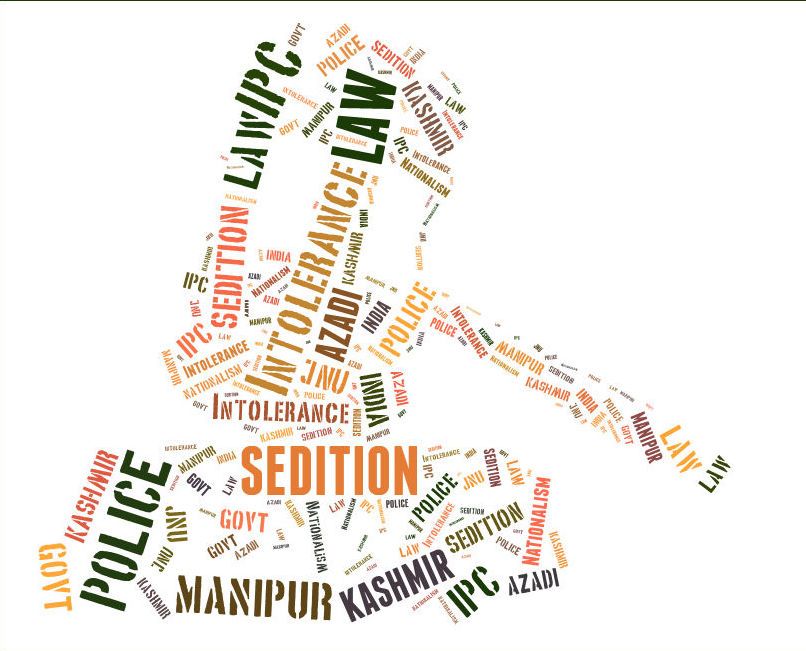An Additional Sessions Judge in Faridabad in a recent bail order criticized the misuse of the sedition law. Its rampant and mindless invocation over the last few years is a disturbing trend. Pending repeal, it is imperative for police officials who misuse it to be prosecuted, writes VINEET BHALLA.
—–
A local court in Faridabad on Wednesday described the adding of the offence of Section 124A (sedition) of the Indian Penal Code [IPC] in a case of a train hoax call by the Faridabad Police as “a misuse of the provision” in an order granting bail to the accused.
Additional Sessions Judge [ASJ] Narender Sura noted that the sedition provision had “been wrongly added in this case just to aggravate the offence committed by the petitioner.”
The accused had, in December 2020, made a phone call to the railway authorities that the Shree Dham Express, departing from the Nizamuddin railway station in Delhi, contained some explosive substance. When this information was found to be false by the police, the petitioner was found and arrested, and it was revealed that he had made the hoax call only to board the train. He was booked under Sections 124 and 505 (statements conducting to public mischief) of the IPC, and had been in custody since January 3, 2021.
ASJ Sura observed, “After going through the record of the case, learned Public Prosecutor failed to convince the Court that how provisions of Section 124A of IPC are attracted in this case as there was no intention on the part of the petitioner to bring or to attempt to bring into hatred or contempt, or excites or attempt to excite disaffection towards the government.”
He directed the Public Prosecutor that a copy of his order be sent to “to the higher police officers to apprise them about the misuse of Section 124A of IPC”.
The full order by the Additional Sessions Judge, Faridabad can be read here.
Also read: Why the Supreme Court must declare Sedition Law unconstitutional
Poor conviction rate
This is just the latest in an unfortunate and well-documented rapid rise in the misuse of the sedition provision in the last few years. As per National Crime Records Bureau data, between 2016 and 2019, the numbers of cases filed under section 124A increased by 160 per cent, while the conviction rate dropped tenfold in the same period, from 33.3 per cent in 2016 to 3.3 per cent in 2019.
As per National Crime Records Bureau data, between 2016 and 2019, the numbers of cases filed under section 124A increased by 160 per cent, while the conviction rate dropped tenfold in the same period, from 33.3 per cent in 2016 to 3.3 per cent in 2019.
In July last year, Chief Justice of India N.V. Ramana, in open court, had expressed concern over the misuse of the provision by the Executive without any accountability, and questioned why the union government was not looking to repeal the provision. Later that month, former Supreme Court judges Justices Deepak Gupta, Aftab Alam, Gopala Gowda and Madan Lokur, as well as former high court judge Justice Anjana Prakash expressed concern over the misuse of the law and advocated for its repeal. Then in October, former Supreme Court judge Justice Fali S. Nariman, at a public event, had urged the Supreme Court to strike down the sedition law as unconstitutional.
While hearing a case in May last year, a three-judge bench of the Supreme Court had said that it was time the court defined the limits of sedition law.
Currently, multiple petitions challenging the constitutionality of the sedition law are pending before the Supreme Court.
Also read: The Case to Amend Sedition Law, India’s Self-Inflicted Wound
Fixing accountability
The Faridabad case indicates that the rampant abuse of the sedition law is not limited to merely political dissidents, but also to ordinary citizens guilty of committing relatively minor offences. Police and executive authorities are trigger-happy to deploy it without the availability of even the basic legal ingredients necessary to invoke the law. This is done, as ASJ Sura correctly points out, to aggravate the offences committed, and keep the accused person in custody as an undertrial for months and years before they can be acquitted upon judicial scrutiny.
The Supreme Court had ruled in 1962 that only such comments that generate the inclination to cause public disorder by acts of violence would be covered by Section 124A.
The parameters for invoking section 124A were clearly laid down by the Supreme Court as far back as 1962 in its landmark judgment in the case of Kedar Nath Singh vs. State of Bihar (1962). In this case, Singh had been convicted for sedition and inciting public mischief because of a speech in which he criticized the government and advocated for the Forward Communist Party. He challenged the constitutionality of the sedition provision. While upholding its constitutionality, the Court ruled that only such comments that generate the inclination to cause public disorder by acts of violence would be covered by section 124A.
Also read: Decoding the history of Sedition law in India
Short of repealing, the only way to put an end to the absurd and wanton invocation of this law is to prosecute police officials who use the charge when its ingredients are nowhere close to being made out, as in this case from Faridabad.
While the Supreme Court decides on the constitutionality of this provision, it must urgently, in the interim, issue mandatory guidelines to fix accountability for overreaching executive officials in this regard.
(Vineet Bhalla is a Delhi-based lawyer, and Assistant Editor at The Leaflet. The views expressed are personal.)


